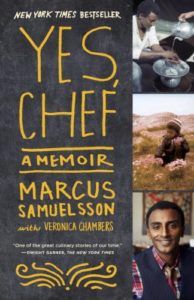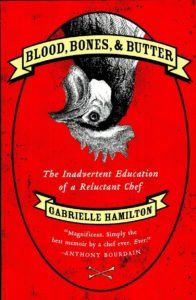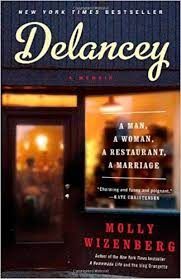The result was delicious and took me a long time, with more than 40 recipes to try for everything from the perfect taco soup to tasty casseroles to balsamic glazed carrots. While I cooked through the pile of recipes, I also started reading about people who do this kinda thing for a living.
Yes Chef by Marcus Samuelsson is a great example of the “chef memoir” genre; it’s one of the reasons I love it. Chefs get a rap for being wild, due to how difficult the behind-the-kitchen-doors experience can be. The stories that come out of years of working hard in grueling environments make it clear that the drama of the kitchen comes out in every bit of food they produce. However, chef memoirs don’t only showcase drama in the kitchen. Blood, Bones, and Butter is more food memoir than chef memoir, despite Gabrielle Hamilton’s successes as a chef. Her droolworthy description of the best baked potato she ever ate makes me realize that we can do things with words that chefs can do with presentation and fragrance: we can make something ordinary into an extraordinary treat.
I’ve read many of the popular chef’s memoirs and I’m glad to have read so many that follow a simple pattern: a person loved food or cooking or both or neither, they began working in a commercial kitchen, and they fell in love with how hard and interesting and delicious the work is. It isn’t a surprising narrative arc. However, I can be pulled in every time. So often, the books read like romance novels: a long, complex courtship between a person and food and restaurant. A great example of the combination of romance and chef memoir is Delancey by popular Orangette blogger Molly Wizenberg. Not only does the book chronicle the loves in her life, but it also chronicles starting a delicious-sounding pizza place. It offers an escape into oregano-scented heaven, with the drama of harried first nights and kitchen trouble. Best of all? No pizza calories.
I’ve become a better cook in my humble home kitchen because of chef memoirs. They teach me little things about how to use ingredients, but they also teach me to care about food. The convenience-culture of the United States pressures me to care less about food all the time. “Treat food as fuel,” or “eat and get on with life” or “look how fast you can prepare and eat this!” are all messages available to us. I want to reject them. I want to keep reading books that show me a different world. The world of chef memoir says that long, leisurely meals after hours of preparation aren’t just normal. They are magical and part of life’s meaning. Like so many other kinds of books, the chefs have done the hard part for me: they’ve lived through gritty, no-work-life-balance jobs. They’ve burned themselves on the range and messed up an order or two. In the end, they’ve also had amazing successes. They’ve seen their restaurants turn from building shells into places people love to be. They’ve learned to enjoy their craft and also the rest of their lives. I was talking to a chef the other day who says he doesn’t cook much at home, and I can hardly blame him. I don’t do much of my day job at home either! The thing that makes me so happy about reading chef memoirs might be the fact that they get to share all the drama of the kitchen with us so that no one forgets the struggle they’ve been through. We all can taste our food a little more clearly after reading about someone who loves it so much. That is certainly worth savoring. Does this post have your mouth watering for more chef memoir? Check out these 10 Memoirs by Women of the Culinary World, or this call for more LGBT Cooking Memoirs. Really hungry? Check out this Four-Course Meal of Food Books!



